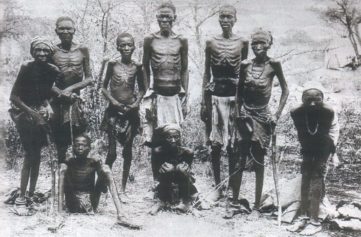In his “Message to the Grassroots” speech in 1963, Malcolm X noted that as a people we must put our differences aside to reach a common goal and change the world around us. We don’t need “nuclear weapons” or “jet planes,” but can succeed with unity. According to Malcolm, our best teacher is history.
“Of all our studies, history is best qualified to reward our research,” he said.”And when you see that you’ve got problems, all you have to do is examine the historic method used all over the world by others who have problems similar to yours. And once you see how they got theirs straight, then you know how you can get yours straight. ”
One method that has proven successful is the formation of a mastermind group. Napoleon Hill explained the purpose of such a group in his popular book “Think and Grow Rich” as “a coordination of knowledge and effort, in a spirit of harmony between two or more people, for the attainment of a definite purpose. This form of cooperative alliance has been the basis of nearly every great success.”
1. SCLC – The Southern Christian Leadership Conference (America)
When: January 10, 1957 – Present
Who: Key players included, Martin Luther King Jr., Joseph Lowery, Ralph Abernathy, Ella Baker, James Bevel, Diane Nash, Jesse Jackson, James Orange, Charles Kenzie Steele and Hosea Williams
Why: Their goal was to form an organization to coordinate and support nonviolent direct action as a method of ending all forms of segregation across the Southern United States.
Accomplishments:
*Helped organize the 1963 March on Washington to push for new civil rights legislation that would outlaw segregation nationwide. Over 200,000 Americans attended what is considered one of the largest political rallies for human rights in United States history. King gave his historic “I Have a Dream” speech at the rally.
*Organized the Birmingham campaign, a movement to bring attention to the integration efforts of Black Americans in Birmingham, Alabama. Led by King and others, the spring 1963 campaign of nonviolent direct actions culminated in widely publicized confrontations between Black youth and white civic authorities, and eventually led the municipal government to change the city’s discrimination laws.
*Joined the Selma to Montgomery, Ala., marches. The first of the three marches started on March 7, 1965, and would later be called Bloody Sunday after marchers were attacked by local police with billy clubs and tear gas. The third began on March 21 and ended on March 25 where an estimated 25,000 protesters marched to the steps of the Alabama capitol in support of voting rights. Within five months, Congress and President Lyndon Johnson responded to the enormous public pressure generated by the Voting Rights Campaign by enacting into law the Voting Rights Act of 1965.



